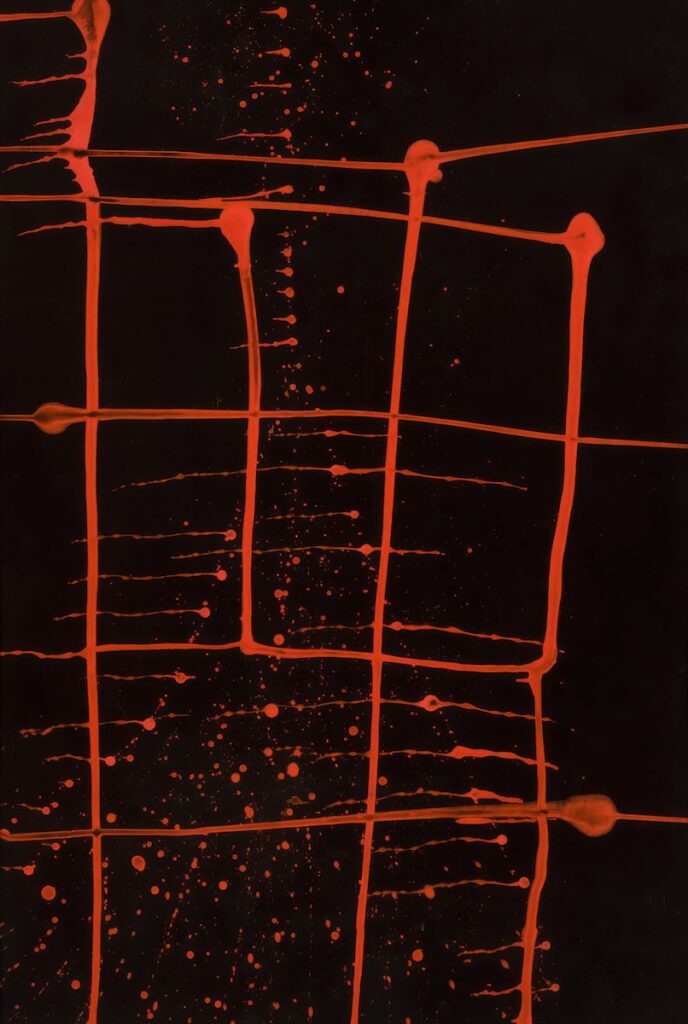A procedural document declared null and void can wipe out months of effort and compromise the outcome of a dispute. Visit nullity in civil proceedings is a formidable sanction in civil law, often imposed to punish a party's inactivity or failure to comply with a time limit, whether for a summons, an appeal or an order for payment. Worse still, it can trigger a little-known time bomb: the statute of limitations on your action. Fortunately, all is not lost. For expert legal assistance and the implementation of strategies to ensure the durability of your proceedings, our legal assistance services in civil litigation are at your disposal. There are avenues of appeal, but their effectiveness depends on your responsiveness and your mastery of the procedural mechanisms.
Statement of nullity: the direct means of appeal
The first remedy to consider is a declaration of nullity. This involves asking the judge who declared the document null and void to reverse his decision, provided that he can prove an error or a legitimate reason. The details of this request vary depending on the legal instrument concerned.
When a summons lapses
Article 407 of the Code of Civil Procedure states that "a decision that a summons has lapsed may be set aside, in the event of error, by the judge who issued it". However, this remedy is only available if the decision that the summons has lapsed was taken in non-adversarial proceedings. If the claimant fails to appear, article 468 of the Code offers a second chance. The claimant has fifteen days in which to inform the court registry of a legitimate reason for his or her absence. If, in the exercise of his discretion, the judge accepts the reason, the parties are summoned to a new hearing where the nullity may be revoked.
For the lapse of an expert's deposit
When a judicial expert report is ordered, the claimant is often required to make a deposit (a sum of money) to cover the expert's costs. Failure to comply with this time limit constitutes a default, which results in the investigation being declared null and void. However, article 271 of the Code of Civil Procedure allows the judge to relieve a party of this lapse if it can show a legitimate reason. The judge's decision must be explicit; a simple extension of time granted to the expert does not legally constitute relief from the lapse (Cass. 2e civ., 22 May 1995, no. 93-15.564). The judge must also ensure compliance with the adversarial principle, and it is essential to monitor compliance with this principle by inviting the other party to present its observations (Cass. 2e civ., 8 February 2007, no. 06-10.198).
Case law assessment of "legitimate reason": a key concept
The concept of "legitimate reason" is at the heart of the procedure for declaring a claim null and void. Its assessment, which is partly beyond the control of the Cour de cassation, is left to the sovereign discretion of the trial judges, who review the circumstances of the case on a case-by-case basis. The case law, through each relevant ruling, has gradually drawn the contours of what is acceptable and what is not. For example, a lawyer's error or simple negligence are generally not considered to be legitimate grounds. The Court of Cassation, as part of its standard-setting review, has thus rejected counsel's geographical remoteness (Cass. 2e civ., 8 February 2024, no. 21-25.928) or the fact of not having received the opposing submissions (Cass. 2e civ., 28 June 2012, no. 11-21.051). On the other hand, unforeseeable and insurmountable circumstances, such as a proven and non-attributable failure of the lawyers' electronic communication system (RPVA) or a sudden and serious health problem, may be recognised as legitimate reasons after a check of the supporting documents.
Specific appeals against orders of pre-trial magistrates
When the decision to declare a case null and void comes from the judge or the Conseiller de la Mise en Prejudice, declaring the case null and void is generally not the appropriate course of action. The Code of Civil Procedure organises specific appeals which are not, legally speaking, all hierarchical appeals, but a review of the decision.
Appeal against an order of the Pre-Trial Judge
An appeal may be lodged against an order of the Pre-Trial Judge (juge de la mise en état - JME) that puts an end to the proceedings, which is the case with a decision declaring that the proceedings have lapsed. In accordance with article 795 of the Code of Civil Procedure, this appeal must be lodged within fifteen days of service of the order. This appeal is the main means of reviewing the EMJ's decision.
Referral against an order of the Pre-Trial Judge
In appeal proceedings, it is the Conseiller de la Mise en Condition (CME), who is responsible for overseeing the proper conduct of the proceedings, who has jurisdiction to penalise non-compliance with procedural time limits, in particular by declaring the statement of appeal null and void. His order cannot be revoked (article 911 of the Code of Civil Procedure since 1 September 2024). The choice is therefore limited: the only possible remedy is a referral. This involves submitting the order for review by the panel of the Court of Appeal. This procedure must be initiated by simple application within fifteen days of the date of the order (article 913-8 of the CPC, which came into force on 1 September 2024).
The annihilating effect of the lapse of prescription: a procedural time bomb
The most serious and insidious consequence of lapsing is its interaction with prescription. A decision that a claim has lapsed can destroy an action that was legitimately thought to have been saved, transforming a procedural difficulty into a definitive loss of the right to act.
The principle: the interruptive effect of the initial act is deemed never to have existed
When legal action is taken, the initiating act (such as a writ of summons) has the effect of interrupting the limitation period. This means that the time that has elapsed prior to this action is wiped out, and a new period begins to run. However, article 385 of the Code of Civil Procedure specifies that the lapse of the summons renders the effect of interrupting the limitation period null and void. In other words, it is as if the document had never been served. Case law, in a constant review, applies this text with absolute rigour: lapsing retroactively deprives the deed of all its consequences, including the interruption of the statute of limitations (Cass. 2e civ., 4 Sept. 2014, no. 13-22.610).
Practical consequences: the risk of prescription or foreclosure of the action
The practical implications are formidable. Imagine a claim under the Civil Code that is subject to a five-year limitation period. You take your debtor to court four years and eleven months after the start of the limitation period. One year later, the proceedings are declared null and void. As the interruptive effect of your writ of summons is cancelled, the calculation of the limitation period resumes at its initial starting point. Your action has therefore been time-barred for almost a year, without you even realising it. This mechanism is particularly dangerous in the case of foreclosure periods (often referred to as "cut-off" periods), which cannot be suspended or interrupted and are sometimes of public order, making any new action impossible. The explanation is simple: prescription extinguishes the right to act but leaves a natural obligation in place; foreclosure, on the other hand, annihilates the right itself. The judge's control over these time limits is therefore of the utmost importance.
Strategies to save the share: reintroducing a body as a matter of urgency
When faced with a decision that a claim has lapsed, the first priority is not just to challenge it, but to immediately assess its impact on the limitation period. The action plan is clear and must be implemented without delay. Firstly, the limitation period must be recalculated on the basis that the lapsed deed never existed. Secondly, if this recalculation reveals that the action is not yet time-barred, it is imperative, without waiting for the outcome of any appeal, to bring a new action before the competent court (judicial court, commercial court, depending on the matter). This is the only way to guarantee a new interruptive effect and save the action from imminent prescription. For an in-depth analysis of prescription and foreclosure that have an impact on the sustainability of your actions, explore our dedicated article.
Advanced strategies to prevent and counter the effects of obsolescence
In addition to traditional remedies, proactive management and knowledge of specific cases can help limit risks and respond effectively. For a proactive approach, answers to the most frequently asked questions and practical advice on prevention, consult our a complete guide to caducity in civil proceedings.
Anticipating so as not to suffer: proactive management of procedural deadlines
The best strategy against obsolescence is prevention, which means rigorous control and flawless organisation. The use of procedural diaries, with multiple alert systems, is an essential prerequisite. The risk of human error is reduced by double checking critical deadlines (service of the statement of appeal, submission of pleadings, recording of expert opinions) by different members of the team. Checking that documents have been received correctly by the court clerk is also a useful precaution in the general context of case management.
The particular case of the lapse of an order for payment
The order for payment procedure is fertile ground for invalidity, with two specific pitfalls. Firstly, under article 1411 of the Code of Civil Procedure, an order for payment is null and void if it is not served on the debtor within six months of its date. Secondly, if the debtor does not lodge an objection within one month of service, the creditor must, on pain of nullity, apply for the enforcement order to be issued within one month of expiry of the objection period (art. 1423 of the CPC). These two time limits must be carefully monitored.
Monitoring critical deadlines in appeal proceedings
Appeal proceedings are particularly sensitive to deadlines, which require constant monitoring. Article 902 of the Code of Civil Procedure requires the appellant to serve his statement of appeal on the respondent who has not set up a lawyer within one month of being notified by the court registry. More commonly known, article 908 of the same Code requires the appellant to submit his submissions to the court registry within three months of the statement of appeal. The Court of Cassation, following in the footsteps of the Constitutional Council, which has already ruled on the compliance of strict time limits, has confirmed that these time limits comply with the right to a fair trial, as guaranteed by the European Convention on Human Rights (Cass. 2e civ., 1 June 2017, no. 16-18.212). Extreme vigilance and constant monitoring are therefore required.
Distinctions from related procedural sanctions: don't confuse everything
To devise an effective defence strategy, it is essential not to confuse nullity with other procedural sanctions such as nullity or forfeiture. The legislative framework of each sanction has its own nature and consequences.
Caducité vs. Nullité: sanctioning the "after" vs. sanctioning the "before
The main distinction between nullity and lapse is temporal. Nullity sanctions a defect that affects the procedural document at the time of its formation. The document is born defective (e.g. a writ of summons whose content does not comply with the compulsory particulars). Lapse, on the other hand, affects a procedure that was initially perfectly valid. It is an event subsequent to its creation - typically the failure to complete a formality within a given time limit - that deprives it of value for the future. The review of the validity of the document therefore does not relate to the same moment.
Lapse vs. forfeiture: an analogy to be handled with care
Lapse is another procedural sanction often confused with nullity. While both sanction inaction, forfeiture is generally more radical. It often results in the loss of the substantive right itself, and not just the procedure. For example, in the law of bills of exchange, the bearer of a bill who fails to 'protest' it because it is not paid on time loses his rights of recourse against the endorsers. Not only does the protest lapse, but the holder's right of action under the law of bills of exchange also lapses. This type of sanction is found in specific litigation, such as social security litigation. The codification of these sanctions in the Code should not obscure their differences. Even where the law does not provide for any specific remedy, it is sometimes possible to invoke article 17 of the Code of Civil Procedure. In addition to invalidity, other mechanisms such as forfeiture in civil proceedings can also be used to punish inactivity or failure to comply with procedures, and deserve special attention.
The complexities of lapsing a claim, its remedies and its far-reaching consequences, particularly as regards the limitation period, require expert analysis and a high level of responsiveness. If you are faced with a decision to declare a claim null and void, do not hesitate to contact our firm to discuss your options and ensure that you take the right steps. If you want to keep abreast of the latest case law in this area, subscribing to a specialist newsletter may be a wise choice.
Sources
- Code of Civil Procedure, articles 17, 271, 385, 407, 468, 795, 902, 908, 911, 913-8, 1411, 1423
- Court of Cassation, 2nd Civil Chamber, 15 May 1974, no. 73-13.955 (published in Bulletin civil II, no. 188)
- Court of Cassation, 2nd Civil Chamber, 22 May 1995, no. 93-15.564
- Court of Cassation, 2nd Civil Division, 8 February 2007, no. 06-10.198
- Court of Cassation, 2nd Civil Division, 28 June 2012, no. 11-21.051
- Court of Cassation, 2nd Civil Chamber, 4 September 2014, no. 13-22.610
- Court of Cassation, 2nd Civil Chamber, 1 June 2017, no. 16-18.212
- Court of Cassation, 2nd Civil Chamber, 8 February 2024, no. 21-25.928




